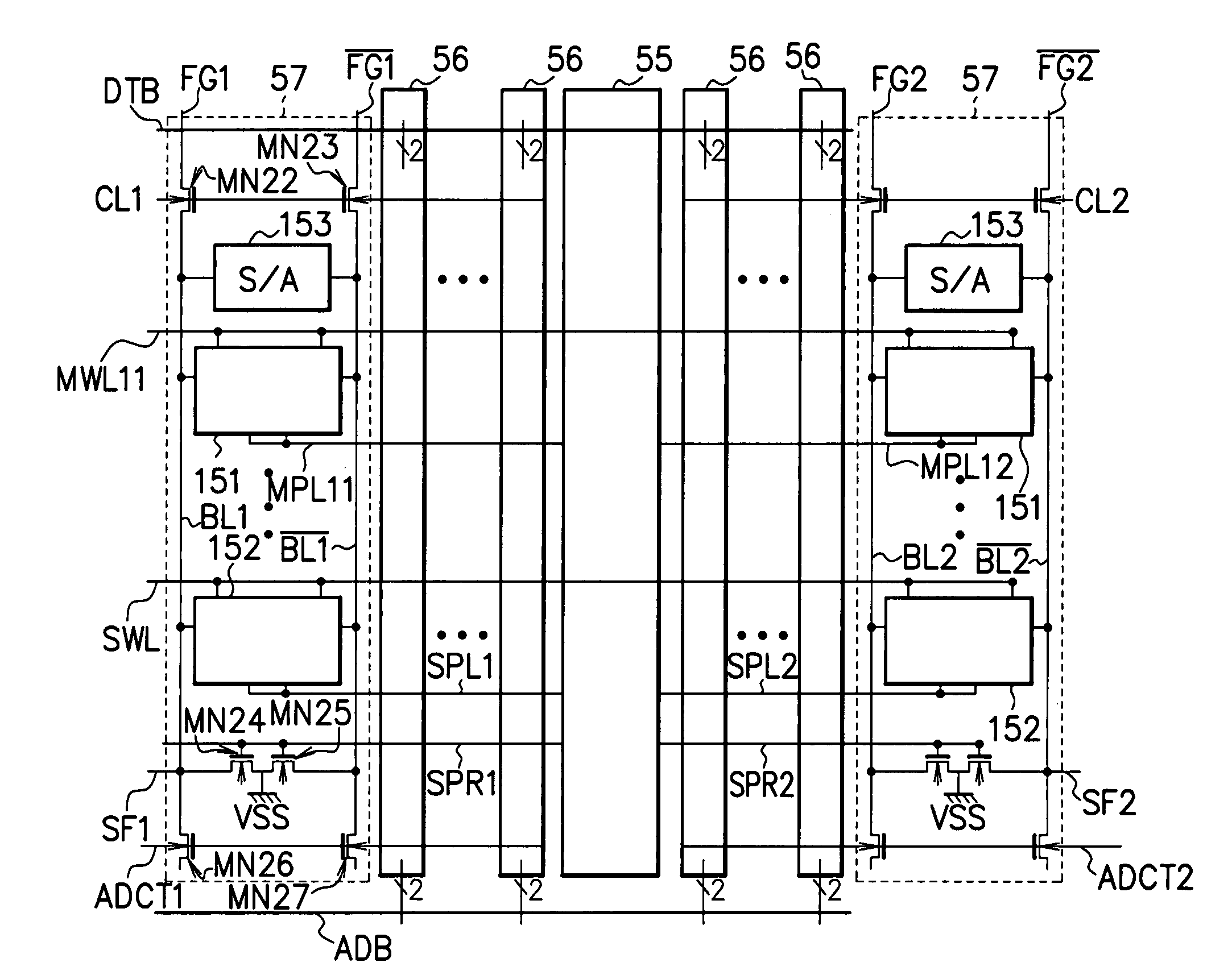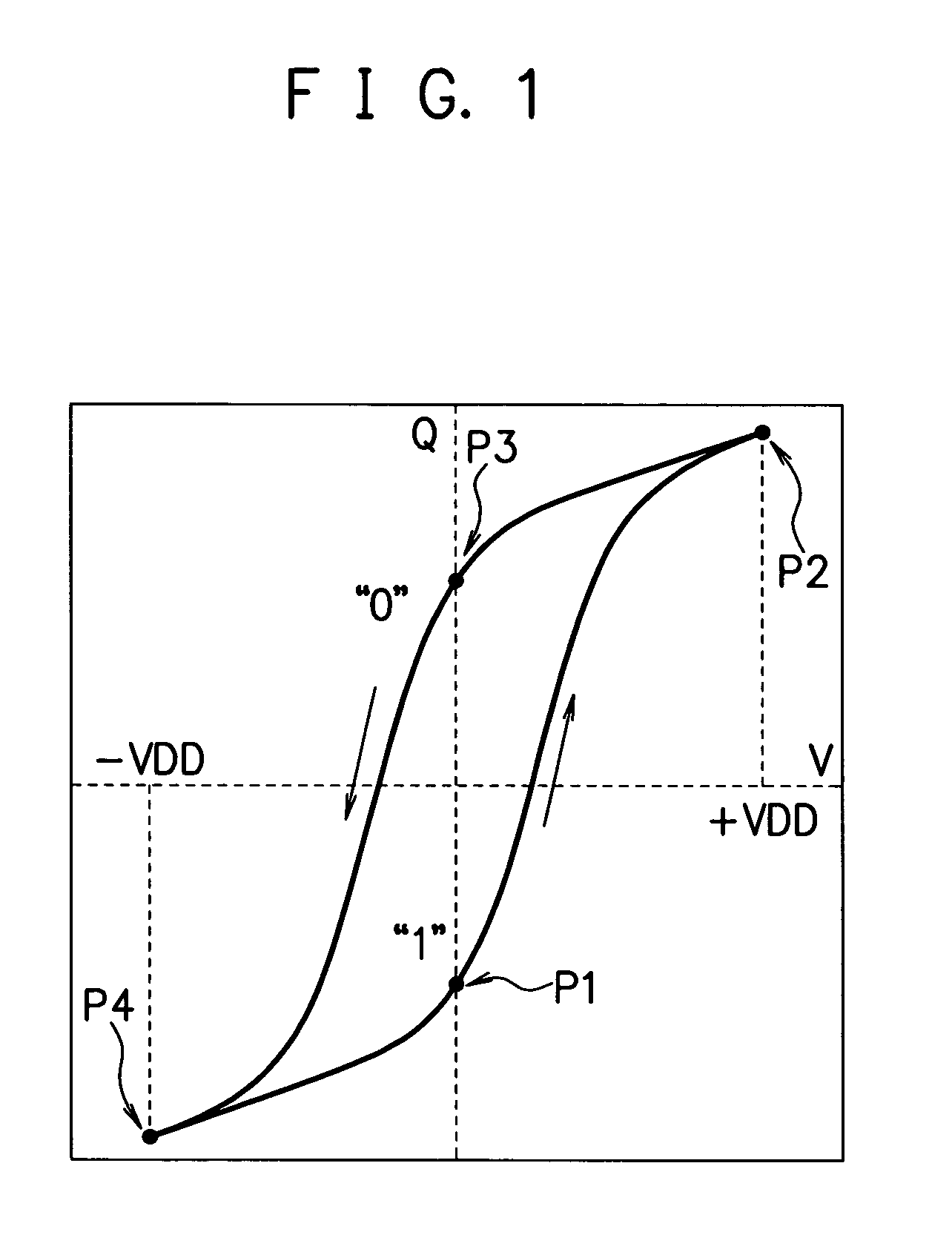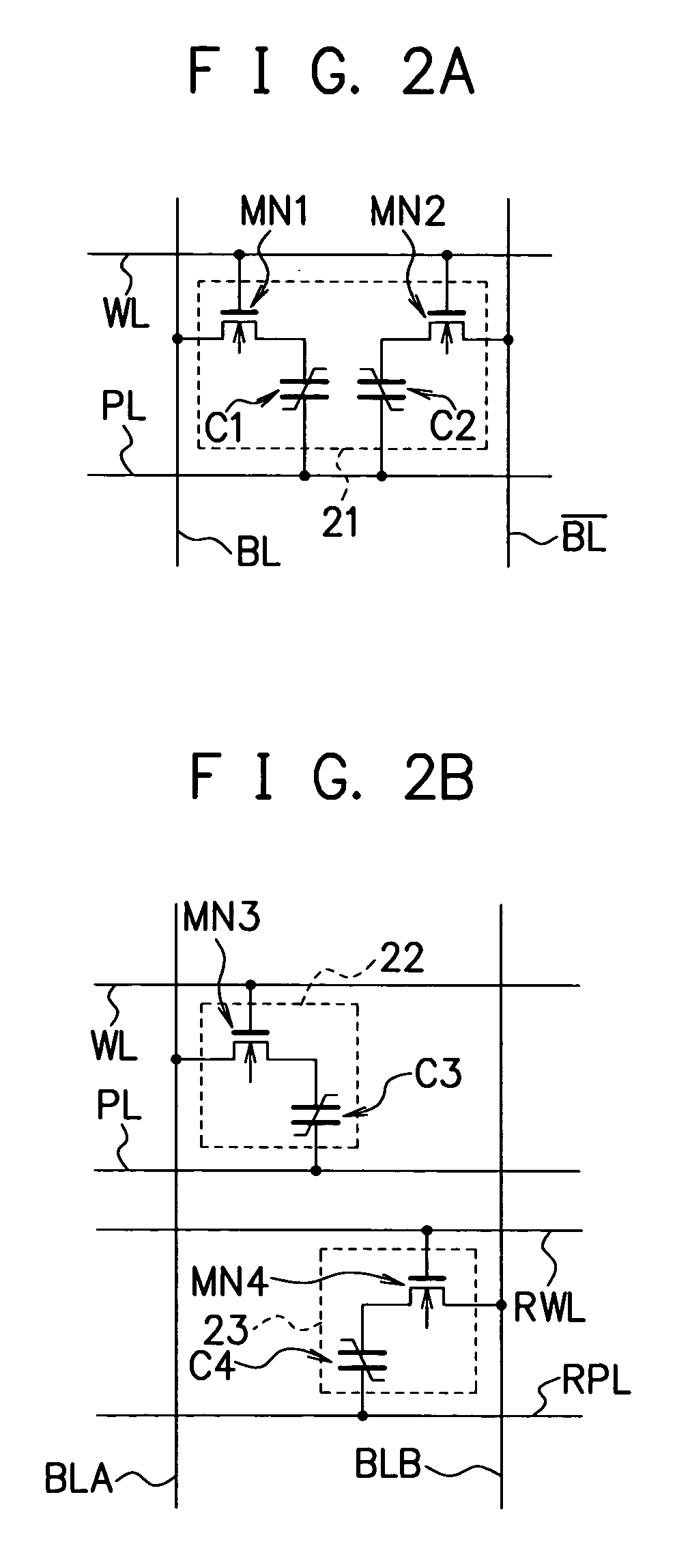Semiconductor memory device for securely retaining data
a memory device and memory technology, applied in the direction of information storage, static storage, digital storage, etc., can solve the problems of data instability, data loss, data loss, etc., and achieve the effect of suppressing data loss
- Summary
- Abstract
- Description
- Claims
- Application Information
AI Technical Summary
Benefits of technology
Problems solved by technology
Method used
Image
Examples
first embodiment
[0054
[0055]A semiconductor memory device according to a first embodiment of the present invention suppresses loss of data even when a reading sequence finishes abnormally before a restore operation due to unexpected occurrence of an accident such as a power cut-off. For that purpose, inside the device during a normal state, as soon as data is read out to a bit line from a memory cell retaining the data, the read data is written to and retained in a guarantee cell for retaining data temporarily. Further, address information (address data) is retained as location information for specifying the memory cell from which the data is read out. In case that the reading sequence abnormally finishes before the restore operation, the data retained in the guarantee cell can be written to the memory cell during a startup operation based on the address information.
[0056]FIG. 4 is a block diagram showing a configuration example of a ferroelectric memory device applying the semiconductor memory devi...
second embodiment
[0158
[0159]Next, a second embodiment will be described.
[0160]The ferroelectric memory in the above-described first embodiment, the guarantee cell is added to the bit lines BLi, / BLi to which the memory cells 61 are connected as shown in FIG. 6, and the memory cells 61 and the guarantee cell 62 are always in a state of being connected electrically. Therefore, it is conceivable that increase in capacity due to addition of the guarantee cell 62 causes decrease in operation speed (sense speed) of the sense amplifier 63, or an electric charge discharged during initialization of the guarantee cell 62 charges the bit lines BLi, / BLi.
[0161]Accordingly, a ferroelectric memory to be described below that is application of a semiconductor memory device according to the second embodiment of the present invention allows electrical separation of memory cells and a guarantee cell by transfer gates (transistor) provided on bit lines, and enables control of an electrical connection state between the ...
third embodiment
[0173
[0174]Next, a third embodiment will be described.
[0175]In the case where, for example, one guarantee cell is connected to a bit line to which memory cells are connected, it is conceivable that access concentrates to the guarantee cell to deteriorate cell characteristics in a very short period of time as compared to the memory cells. Accordingly, in a ferroelectric memory that is application of a semiconductor memory device according to the third embodiment of the present invention, a plurality of guarantee cells are connected to the bit line to which the memory cells are connected, thereby preventing concentration of access to one guarantee cell and suppressing the deterioration of cell characteristics of the guarantee cells.
[0176]The ferroelectric memory that is application of the semiconductor memory device according to the third embodiment of the present invention is configured similarly to the ferroelectric memory according to the above-described first and second embodiment...
PUM
 Login to View More
Login to View More Abstract
Description
Claims
Application Information
 Login to View More
Login to View More - R&D
- Intellectual Property
- Life Sciences
- Materials
- Tech Scout
- Unparalleled Data Quality
- Higher Quality Content
- 60% Fewer Hallucinations
Browse by: Latest US Patents, China's latest patents, Technical Efficacy Thesaurus, Application Domain, Technology Topic, Popular Technical Reports.
© 2025 PatSnap. All rights reserved.Legal|Privacy policy|Modern Slavery Act Transparency Statement|Sitemap|About US| Contact US: help@patsnap.com



